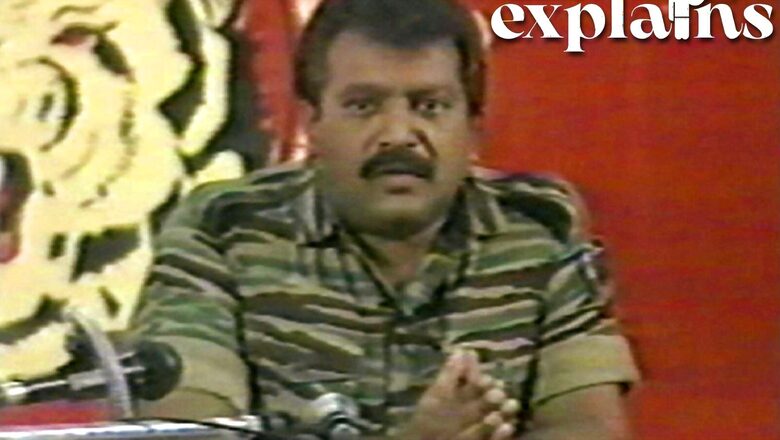
views
Velupillai Prabhakaran, the leader of Eelam Tamils in Sri Lanka is doing well, a top Tamil nationalist leader claimed on Monday and said a conducive atmosphere prevails for him to appear now. In a press conference, Pazha Nedumaran, a noted Tamil nationalist leader, prefixed his declaration as a ‘true announcement’ and said the international (political) atmosphere and fierce opposition to Rajapaksas by the Sinhalese people in Sri Lanka has created the right conditions for the leader of the Eelam Tamils, Prabhakaran to emerge.
Asserting that the LTTE leader is doing well, Nedumaran said the announcement would end ‘planned’ suspicions spread about him. Prabhakaran is all set to soon announce a plan for the dawn of the Eelam Tamils in Sri Lanka, he said.
He appealed to Tamils in Sri Lanka and the Tamils living in all other parts of the world to stand together and extend him their their full support. Till such time the Liberation Tigers of Tamil Eelam (LTTE) was powerful, they did not allow any forces inimical to India to find a toehold in the regions held by them in Sri Lanka, he said.
They not only opposed such forces but also have not received any support from such nations opposed to India, he added.
It may be recalled that Prabhakaran was killed in 2009 in the war between Sri Lankan Army and the LTTE. ‘Eelam’ in Tamil denotes the homeland of the Tamil people.
About Prabhakaran
Family
Velupillai Prabhakaran was born on November 26, 1954, in the northern coastal town of Valvettithurai, the youngest of four children of Thiruvenkadam Velupillai and Vallipuram Parvathy.
Thiruvenkadam Velupillai worked for the Ceylon Government as a District Land Officer. He hailed from a powerful and rich family that owned and ran the major Hindu temples in Valvettithurai, according to reports.
LTTE
Angered by previous Sri Lankan administrations’ discrimination towards Tamils, Prabhakaran joined the student organisation Tamil Youth Front (TYF) during the standardisation discussions.
He created the Tamil New Tigers in 1972. In the early 1970s, Sirimavo Bandaranaike’s United Front administration implemented the Policy of Standardization, which made the criterion for university entrance lower for Sinhalese than for Tamils.
The TNT was renamed the Liberation Tigers of Tamil Eelam (LTTE), often known as the Tamil Tigers, on May 5, 1976. By the 1980s, the LTTE was conducting increasing attacks against police and military troops.
On July 23, 1983, the LTTE ambushed an army patrol in Thirunelveli, Sri Lanka, killing 13 Sri Lankan soldiers.
As a result, one of the bloodiest government-sponsored anti-Tamil riots was held (the incident known as Black July), resulting in the damage of Tamil houses and shops, the deaths of hundreds of Tamils, and the displacement of over 150 000 Tamils. As a result of the riots, numerous Tamils joined the LTTE, which marked the start of Eelam War I.
The LTTE was allegedly engaged in the killing of Rajiv Gandhi, India’s former prime minister, in 1991.
‘DEATH’
When the Sri Lankan military advanced rapidly into the last LTTE-held territory in the final days of the 2008-2009 SLA Northern offensive, the Prabhaka leadership retreated. Fierce fighting erupted between the LTTE and the Sri Lanka Army during these final days.
On May 19, at 12:15 p.m., army commander Sarath Fonseka confirmed Prabhakaran’s death on television. His body was first displayed at Swarnavahini around 1:00 p.m, say reports.
With inputs from PTI
Read all the Latest Explainers here
















Comments
0 comment